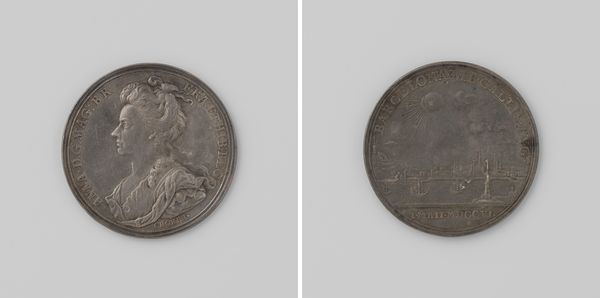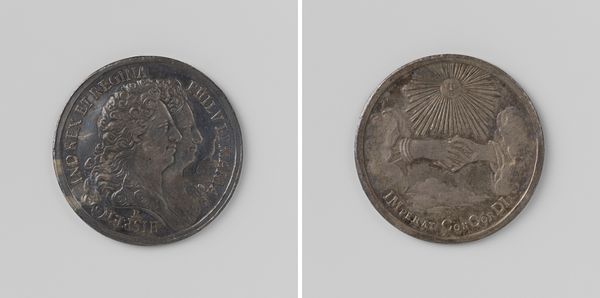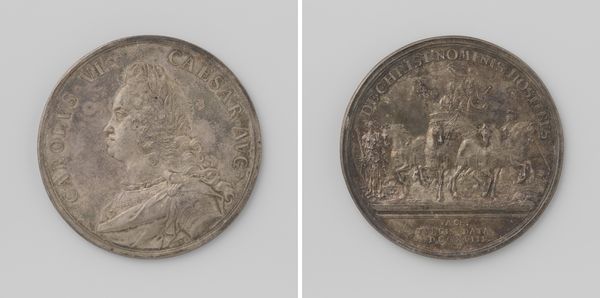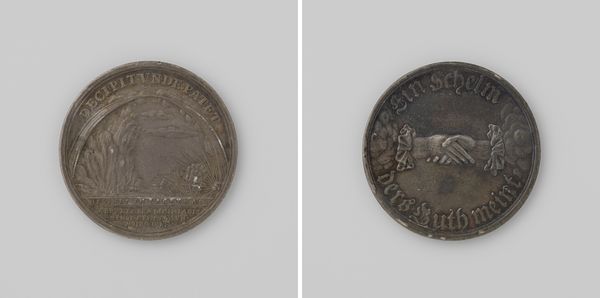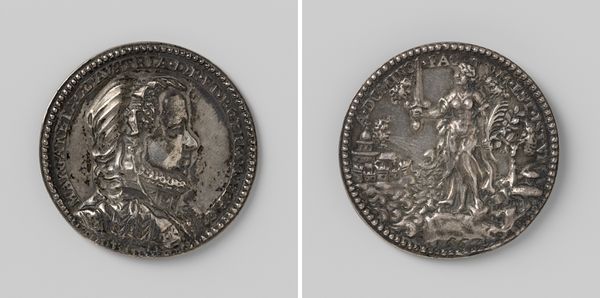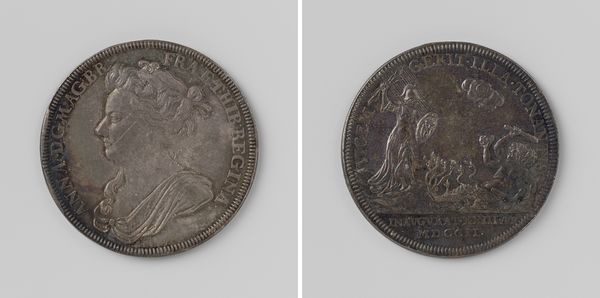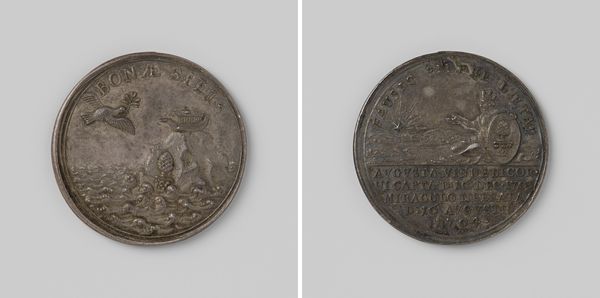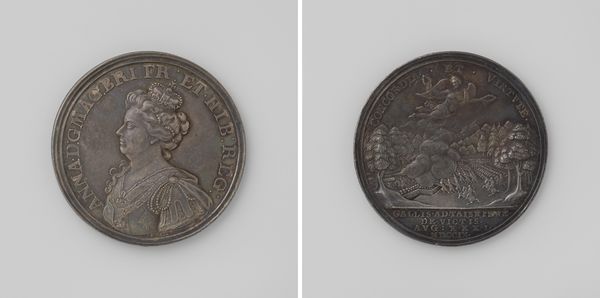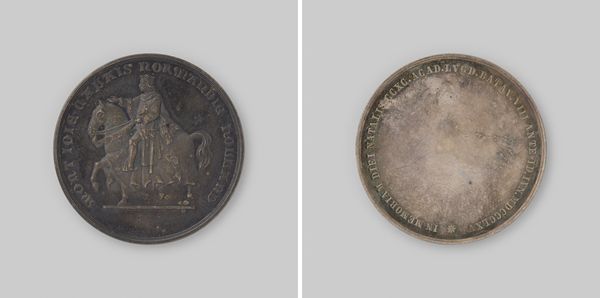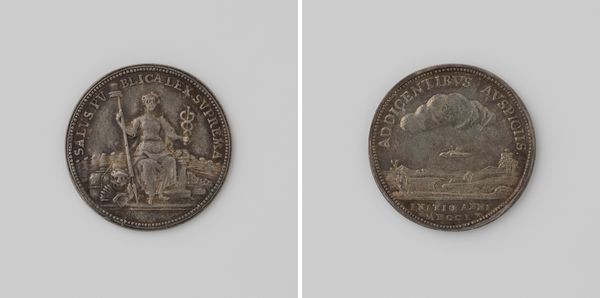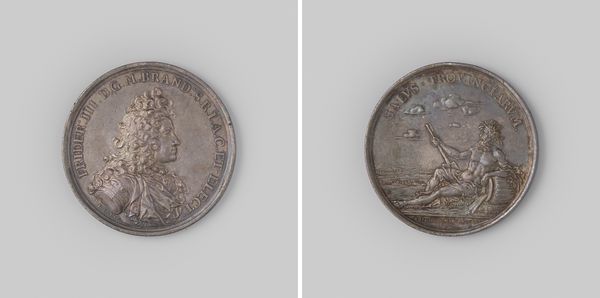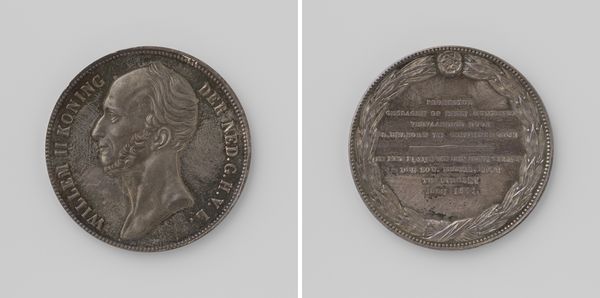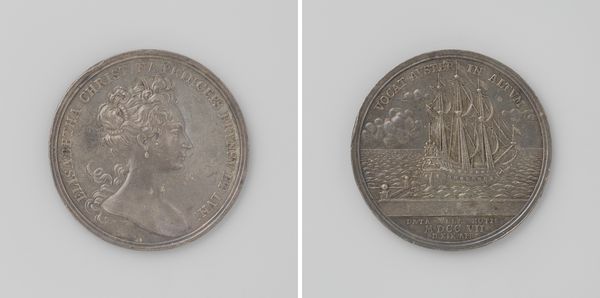
print, metal, engraving
#
portrait
#
baroque
# print
#
metal
#
sculpture
#
engraving
Dimensions: diameter 3.7 cm, weight 18.12 gr
Copyright: Rijks Museum: Open Domain
Editor: This piece is a 1702 engraving on metal by John Croker, titled *Zeeslag bij Vigo (Vigos): het verbranden van de Franse en Spaanse vloot,* which translates to *The Naval Battle of Vigo: The Burning of the French and Spanish Fleet*. The stark depiction of Queen Anne on one side and the dramatized naval battle on the other presents such a strong contrast. What sociopolitical statement can we glean from this work? Curator: It is important to recognize that this piece isn't simply commemorating a military victory, but performing power. Medals like these were circulated to cement narratives of British supremacy under Queen Anne. What does the strategic contrast in imagery communicate, not just about naval battles, but the social hierarchies that put her in a position of power? Editor: It's interesting you highlight the dissemination aspect of these medals; I hadn’t considered its implications for a wider public perception. It also seems like a symbolic gesture of the Queen as detached yet responsible. Curator: Precisely. How do you see the style influencing its message? Consider the visual language typical of Baroque portraiture, like we see of Queen Anne, then contrast with that dramatic but almost abstract landscape of the battle scene. Who does the Queen represent? Editor: Okay, now I am making a connection... Queen Anne epitomizes restrained, almost divine rule. It juxtaposes, legitimizes, even ‘cleanses’ the chaos and violence in Vigo. Almost like divine right meets propaganda. Curator: Yes, but it does more. The inclusion of this narrative of justified dominance on a token reminds us how these grand narratives get filtered down into the minutiae of everyday life and lived experience. What can we say, finally, about the impact of an object like this on the public that encounters it? Editor: That’s fascinating, especially recognizing this piece as more than just aesthetic; its historical roots speak to identity, politics and everyday life under sovereign rule. I'll certainly be rethinking the narrative power of such historical objects moving forward. Curator: Indeed, seeing it that way transforms our understanding.
Comments
No comments
Be the first to comment and join the conversation on the ultimate creative platform.
